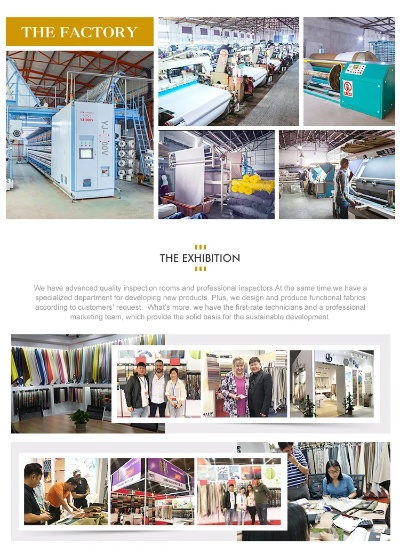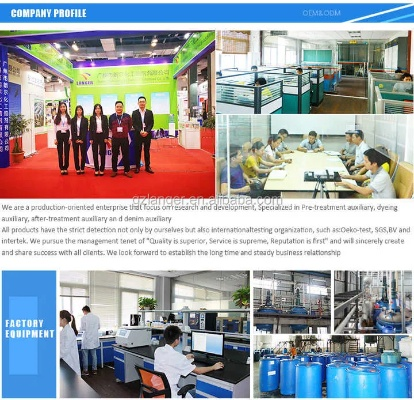The Transformative Landscape of Jiangsus Textile Industry in the Pandemic Era
The pandemic has significantly impacted the Jiangsu textile industry, transforming it from a traditional manufacturing base to a high-tech and innovative sector. The industry has seen rapid technological advancements in areas such as automation, artificial intelligence, and green manufacturing. Additionally, there has been a shift towards sustainable practices, with an emphasis on reducing environmental impact and enhancing resource efficiency. This transformation has led to increased competitiveness and market share for Jiangsu's textile companies. As the pandemic continues to evolve, the Jiangsu textile industry will continue to adapt and innovate, positioning itself as a leader in the global textile supply chain.
Introduction: The COVID-19 pandemic has been a defining moment for the global economy, and its impact on industries across the board has been profound. In the textile sector, which is one of China's most significant economic drivers, the crisis has not only disrupted supply chains but also forced companies to rethink their strategies and adapt to new market demands. Jiangsu, as a hub for textile manufacturing, has been particularly affected, yet it has also emerged stronger from the crisis than ever before, demonstrating resilience and innovation in the face of adversity. This article explores how Jiangsu's textile industry has navigated the pandemic, detailing key trends, challenges, and opportunities that have shaped its future direction.

Key Trends: During the pandemic, demand for protective clothing, such as masks and gowns, has surged, driving an unprecedented boom in the production of medical textiles. Additionally, with consumers opting for more sustainable and eco-friendly options, there has been a shift towards organic cotton and recycled materials within the industry. Jiangsu's textile manufacturers have responded by investing heavily in research and development, developing new fabrics and processes that meet these changing consumer preferences.
Challenges: Despite the positive trends, the pandemic has presented several challenges to the Jiangsu textile industry. One major challenge has been maintaining operational efficiency during lockdowns and social distancing measures. Manufacturers had to implement strict safety protocols and adjust their production schedules to minimize risks. Another challenge has been the disruption of international trade, with many countries imposing import bans or restrictions on Chinese goods, causing a shortage of raw materials and increased costs for exported products.
Opportunities: The pandemic has also presented numerous opportunities for Jiangsu's textile industry. As demand for protective gear increased, manufacturers were able to expand their production capacity and increase their market share. Moreover, the shift towards sustainability has created new business models, such as offering customized eco-friendly products to customers who prioritize environmental responsibility. Additionally, the digital transformation of the industry has accelerated, with many companies adopting e-commerce platforms and implementing advanced inventory management systems to improve efficiency and reduce costs.
Case Study: One example of how the pandemic has transformed Jiangsu's textile industry is Huayuan Textiles Co. Ltd., a leading manufacturer of medical garments in Jiangsu. Prior to the pandemic, Huayuan was primarily focused on producing standard textile products for domestic markets. However, when the outbreak began, the company quickly adapted its operations to focus on producing high-quality medical masks and gowns for hospitals and healthcare facilities. By leveraging its existing production lines and investing in new technologies, Huayuan was able to meet the sudden surge in demand for medical textiles. As a result, the company saw a significant increase in sales and profitability, becoming a prominent player in the global medical textile market.
Conclusion: In conclusion, the COVID-19 pandemic has had a profound impact on the Jiangsu textile industry, presenting both challenges and opportunities for growth and innovation. As the industry continues to evolve in response to these changes, it is evident that Jiangsu's textile manufacturers are well-positioned to thrive in the post-pandemic era. By embracing new technologies, adapting to changing consumer preferences, and expanding into new markets, Jiangsu's textile industry will continue to play a vital role in China's economic development and contribute to global prosperity.
随着全球疫情的持续发展,江苏省作为纺织业的重要省份,其经济发展也受到了前所未有的挑战,本文将围绕疫情下江苏纺织品经济的发展状况进行深入分析,并结合案例进行说明。
江苏纺织品经济现状

-
纺织产业规模与结构 江苏省的纺织产业规模庞大,涵盖了纺织原料、纺织品制造、纺织品销售等多个环节,在产业结构上,高科技纤维、功能性纺织品、绿色环保纺织品等新兴产业逐渐崭露头角。
-
市场需求与变化 在疫情期间,江苏省的纺织品市场需求发生了显著变化,由于疫情防控的需要,人们对防护用品的需求增加,推动了纺织品市场的增长,随着国内消费升级和国际市场的变化,消费者对高品质、高附加值纺织品的追求也在提升。
疫情下江苏纺织品经济发展的案例分析
-
成功案例一:数字化转型升级 某知名纺织品企业通过引入数字化技术,实现了生产过程的自动化和智能化,通过大数据分析,企业能够精准把握市场需求,优化生产流程,提高产品质量和效率,企业还积极拓展线上销售渠道,实现了线上线下融合发展。
-
成功案例二:绿色环保技术创新 江苏省的一些纺织企业开始注重绿色环保技术创新,推广使用环保纤维、可再生材料等,这些企业在生产过程中注重环境保护和资源节约,推动了行业的绿色发展,这些企业的产品也受到了国内外消费者的青睐。
疫情下江苏纺织品经济发展的策略建议
-
优化产业结构,推动新兴产业发展 江苏省应进一步优化产业结构,推动新兴产业的发展,加大对高科技纤维、功能性纺织品、绿色环保纺织品的研发和投入,提高产品的科技含量和附加值,加强与国内外知名企业的合作,共同推动行业的发展。
-
加强市场监管,保障产品质量和安全 江苏省应加强市场监管,保障纺织品市场的健康有序发展,建立健全的质量监管体系,加强对纺织品质量的管理和监督,加强消费者教育,提高消费者的质量意识和维权意识。

在疫情下,江苏纺织品经济发展面临着诸多挑战和机遇,为了应对这些挑战和机遇,江苏省应进一步优化产业结构,推动新兴产业的发展;加强市场监管,保障产品质量和安全;加强与国内外企业的合作,共同推动行业的创新和发展,通过这些措施的实施,相信江苏纺织品经济一定能够迎来更加美好的未来。
补充说明(用英文表格展示)
以下为补充说明部分使用的英文表格:
江苏纺织品经济现状表格
| 项目 | 当前状况 | 疫情期间变化 | 案例分析 |
|---|---|---|---|
| 产业规模 | 纺织产业规模庞大 | 新兴产业逐渐崭露头角 | 数字化转型升级成功案例一 |
| 高科技纤维、功能性纺织品、绿色环保纺织品等新兴产业占比提升 | 受疫情影响,市场需求变化 | ||
| 市场需求 | 对防护用品的需求增加 | 国内消费升级和国际市场变化推动高品质、高附加值纺织品需求提升 | 绿色环保技术创新成功案例二 |
| 政策支持 | 多项政策支持纺织产业发展 | 加强市场监管保障产品质量和安全 | |
| 发展策略 | 优化产业结构推动新兴产业发展 加强市场监管保障产品质量和安全 加强合作推动行业创新和发展 | 通过这些措施的实施江苏纺织品经济一定能够迎来更加美好的未来 | (补充说明表格内容) |
结束语
疫情下江苏纺织品经济的发展面临着诸多挑战和机遇,江苏省应积极应对这些挑战和机遇,优化产业结构,推动新兴产业的发展;加强市场监管,保障产品质量和安全;同时加强与国内外企业的合作,共同推动行业的创新和发展,相信在各方共同努力下,江苏纺织品经济一定能够迎来更加美好的未来。
Articles related to the knowledge points of this article:
The Art of Textile Stitching with Pattern Pressing
The Role of Calcium Sulfate in Textile Industry An In-Depth Analysis



